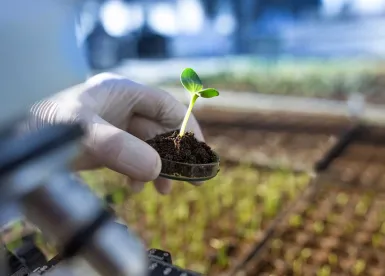The Biden Administration is using a comprehensive set of tools to stick closely to campaign promises around — and the public demand for — climate action.
Recently, the US Patent and Trademark Office (USPTO) announced changes to the patent application process through a new program called the Climate Change Mitigation Pilot Program. The program prioritizes the examination of patent applications claiming products or processes that reduce greenhouse gas emissions. This accelerated examination process will last until June 5, 2023, or until the USPTO receives 1000 applications, whichever comes first.[1]
Requirements
To qualify, prospective applicants must meet the following criteria:
-
File a non-continuing original utility nonprovisional application, national stage application, or nonprovisional application that claims the benefit of only one prior application that is either a nonprovisional application or an international application designating the United States;
-
The application must have at least one claim to a product or process that reduces greenhouse emissions;
-
File a Petition to Make Special using Form PTO/SB/457 at the time of, or within 30 days of, filing the application;
-
File the application electronically in DOCX format.[2]
Qualifying applications are advanced out of turn for examination (i.e., granted special status) until a first action on the merits is complete. Thereafter, the application will be placed on the patent examiner’s regular docket.
Emission Reduction Claims and Categories
Making a claim to a greenhouse-reducing product or process includes selected activities in the Y02 subclass in the Cooperative Patent Classification System (CPC). Under the program, applications for innovations of the following climate change mitigation technologies will be considered:[3]
-
Y02A – technologies for adapting to the adverse effects of climate change;
-
Y02B – technologies related to buildings, appliances, or related end-user applications;[4]
-
Y02C – capture, storage, and sequestration technologies;[5]
-
Y02D – information and communication technologies aiming at the reduction of their own energy use;
-
Y02E – reduction of greenhouse gas emissions related to energy generation, transmission, or distribution;
-
Y02P – technologies in any kind of industrial processing or production;
-
Y02T – technologies related to transportation; or
-
Y02W – technologies related to wastewater treatment or management.
Applicants must certify that they have a “good faith belief” that the accelerated review of their application will positively impact climate change.
Takeaway
Patent applicants that claim a product or process that reduces greenhouse emissions can avail themselves of the USPTO’s Climate Change Mitigation Pilot Program, and receive accelerated examination. Such expedited review can be highly advantageous for start-up, mid-sized and large companies trying to get their climate change mitigation technologies to market.
FOOTNOTES
[1] As of November 1, 2022, at least 147 applications have been filed and 83 have been granted special status.
[2] An Applicant may not file a petition to participate in this pilot program if the inventor or any joint inventor has been named as the inventor or a joint inventor on more than four other nonprovisional applications in which a petition to make special under the Program has been filed. Moreover, the application may not be filed with a nonpublication request or the Applicant must rescind a previously-filed nonpublication request on or before requesting accelerated review under the Program.
[3] The full schedule of the Y02 class is available here.
[4] Category Y02B is particularly prescient in the wake of the Inflation Reduction Act (IRA). The IRA offers tax credit production incentives (Advanced Manufacturing Production Tax Credits or PTCs) for producers of wind and solar energy components and inverters in addition to investment incentives (Clean Energy Investment Credits or ITCs) at the utility-scale and household levels for energy production, storage, and high-efficiency electric appliance upgrades. See here.
[5] This category has increased significance given the sequestration and direct capture technology competitions funded by the appropriations in the IRA. The IRA extends the available Section 45Q tax credit to any carbon capture, direct air capture, or carbon utilization project that begins construction before January 1, 2033, but more importantly, increases the value of those credits. See here.





 />i
/>i
